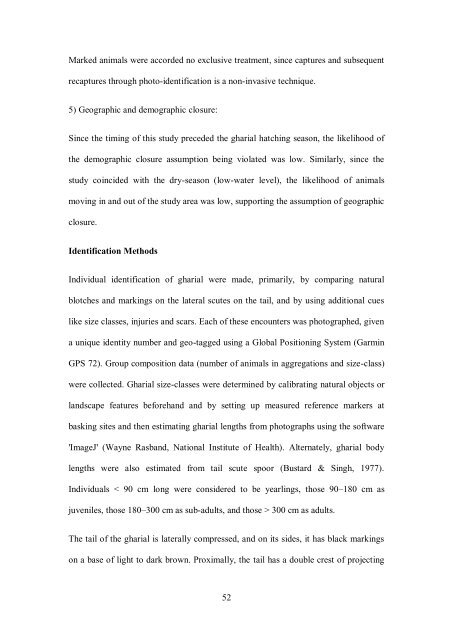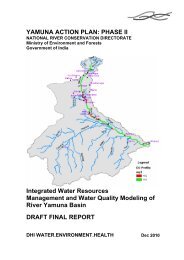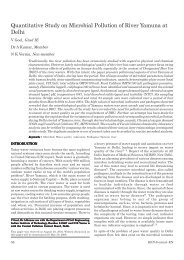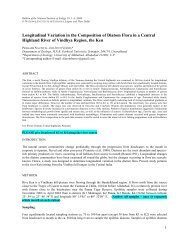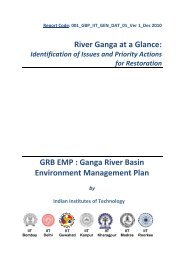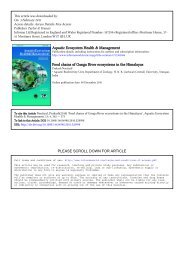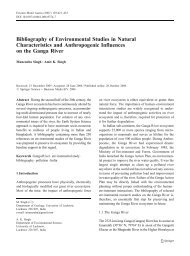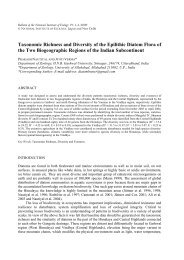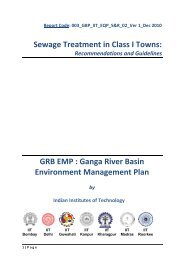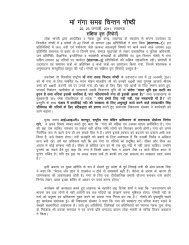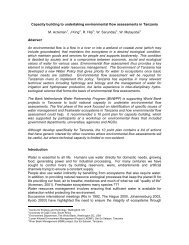Ecological and anthropogenic covariates ... - GANGAPEDIA
Ecological and anthropogenic covariates ... - GANGAPEDIA
Ecological and anthropogenic covariates ... - GANGAPEDIA
You also want an ePaper? Increase the reach of your titles
YUMPU automatically turns print PDFs into web optimized ePapers that Google loves.
Marked animals were accorded no exclusive treatment, since captures <strong>and</strong> subsequent<br />
recaptures through photo-identification is a non-invasive technique.<br />
5) Geographic <strong>and</strong> demographic closure:<br />
Since the timing of this study preceded the gharial hatching season, the likelihood of<br />
the demographic closure assumption being violated was low. Similarly, since the<br />
study coincided with the dry-season (low-water level), the likelihood of animals<br />
moving in <strong>and</strong> out of the study area was low, supporting the assumption of geographic<br />
closure.<br />
Identification Methods<br />
Individual identification of gharial were made, primarily, by comparing natural<br />
blotches <strong>and</strong> markings on the lateral scutes on the tail, <strong>and</strong> by using additional cues<br />
like size classes, injuries <strong>and</strong> scars. Each of these encounters was photographed, given<br />
a unique identity number <strong>and</strong> geo-tagged using a Global Positioning System (Garmin<br />
GPS 72). Group composition data (number of animals in aggregations <strong>and</strong> size-class)<br />
were collected. Gharial size-classes were determined by calibrating natural objects or<br />
l<strong>and</strong>scape features beforeh<strong>and</strong> <strong>and</strong> by setting up measured reference markers at<br />
basking sites <strong>and</strong> then estimating gharial lengths from photographs using the software<br />
'ImageJ' (Wayne Rasb<strong>and</strong>, National Institute of Health). Alternately, gharial body<br />
lengths were also estimated from tail scute spoor (Bustard & Singh, 1977).<br />
Individuals < 90 cm long were considered to be yearlings, those 90–180 cm as<br />
juveniles, those 180–300 cm as sub-adults, <strong>and</strong> those > 300 cm as adults.<br />
The tail of the gharial is laterally compressed, <strong>and</strong> on its sides, it has black markings<br />
on a base of light to dark brown. Proximally, the tail has a double crest of projecting<br />
52


